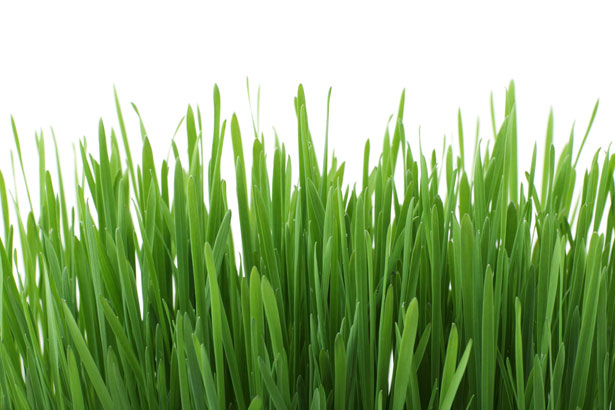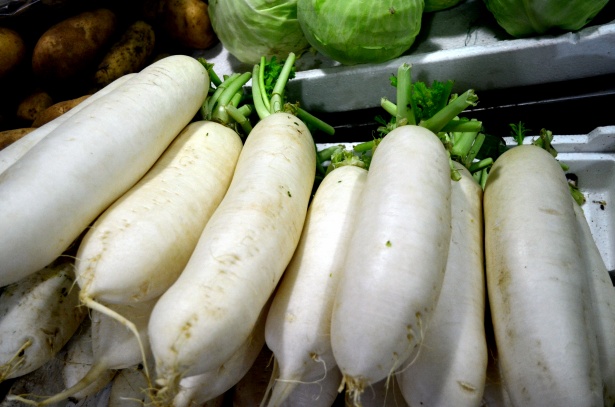What’s Better Than a Lawn? How to Build Your Own Mini-Food Forest
In a world full of bad ideas and crummy inventions, the lawn has to be one of the worst. T he average American lawn uses more industrial chemicals per square foot than the typical factory farm, with dangerous consequences for the people living near it, and that’s to say nothing of the massive amount of water and gasoline needed to maintain these glorified outdoor carpets. Maybe the lawn made sense in its home country of Scotland, where both rain and sheep are plentiful to water and trim grass, respectively, but things really stopped making sense when they started appearing in places like Las Vegas or Phoenix, Arizona.
Even worse, hardly anybody seems to enjoy their lawns anymore. No longer will the aimless wanderer of suburbia hear the plentiful laughter of children at play outside; childhood has been infiltrated by electronic devices, and the lawns sit empty and useless outside, sucking up resources and money, not to mention habitat for native species. Surely there’s a better use for these strips of land?

Fortunately, there is! And it’s something that can not only feed you and your family – and, if you’re the enterprising type, earn you some cold hard cash on top of it.
This is where the permaculture movement and the food forest come in. What’s a food forest you ask? It’s an ancient gardening style catching on in the modern world that imitates the integrated structure of a natural forest but is designed by humans to yield fruits, vegetables, nuts and edible seeds. By focusing on perennials like trees, berry bushes and the like, combined with regular mulching, the quality of the soil improves over time instead of diminishing, as with “traditional” farming of annual crops like corn or soybeans. Best of all, you don’t need a whole lot of space to make a functioning food forest – lots of people have obtained amazing yields on less than a quarter of an acre (check out this amazing front-yard edible garden over at Tenth Acre Farm), with some even setting up ultra mini-food forests on the balconies of high rise apartments! What an incredibly better use for your front or back yard than some high-maintenance grass that doesn’t give much back in return.

IMPORTANT CONCEPT #1: Layering & Integration
Food forests are all about using every available bit of sunlight and niche available for your plants. A tall overstory, beginning with a canopy layer of large, edible-producing trees such as Korean pine nuts, oaks, sugar maples or hickory nuts towers overhead, followed by a low tree layer of smaller nut and fruit trees, such as cherries or hazelnuts. Below the overstory is the understory of shrubs, herbs, root crops, ground covers and climbers.
IMPORTANT CONCEPT #2: The Guild
Building upon the integration concept, guilding is a system of putting plants together for synergistic effect. In other words, instead of creating segregated rows of individual species like in a regular farm, you will be mixing and matching species to support each other.
Around each nut/fruit tree you will be adding nitrogen fixers, or plants that add nitrogen to the soil (beans, licorice, lupins, wolfberry, goumi, autumn olive, etc.) thus aiding the growth of their neighbors; accumulators, which dredge up nutrients from deep in the soil (comfrey, borage, dandelion, etc.) to be released when you “chop and drop” mulch them onto the ground; pollinators, which attract bees and other pollinating insects (Russian sage, butterfly bush, white clover, etc.); insectiaries, which attract beneficial insects to predate on pests (yarrow, Queen Anne’s lace, etc.); and ground covers, which prevent the spread of grass and help retain moisture in the ground (strawberries, clovers, groundnuts, etc.). By including all these elements together in a system, you’re building a mini-ecosystem that will ideally grow to be mostly self-sustaining and low-maintenance while producing delicious, nutritious food for you (or your clients! See below).
Steps to Turning Your Lawn into a Food Forest
Step 1 – Measure and Plan
Find out how much space you have to work with if you don’t already know. Remember, you can do a lot with a little using this gardening technique, particularly if you plan well in advance, so don’t be discouraged if you think you don’t have much room. Research some trees you’d like to have in your food forest and find out where the drip line (the outer edge of the tree’s spread of branches) of each variety will be once it’s mature. If you have lots of space, you might consider larger trees like oaks or English walnuts; if space is truly at a premium, you might simply stick to smaller fruit trees and dwarf varieties. On a piece of paper, draw a map of your growing space and add in-scale circles representing your trees at their mature size. In this way, you can make sure you do not overcrowd your plantings. Take into account where the sun rises and sets, and proximity to walls or fences that might radiate heat and affect your plants when choosing where to place different species according to their needs.
Step 2 – Sheet Mulch
Turning your stupid lawn into something productive takes a little work when you’re first getting started. But don’t kill yourself trying to rip out sod or ruin your soil by soaking it in pesticides – get rid of your grass with a simple but effective sheet mulch that will not only kill the grass over time but improve the overall quality of your soil.
Sheet mulching works by cutting off the sunlight your grass needs to photosynthesize. Wait until fall to obtain several roles of carpenter paper or corrugated cardboard. Cover your lawn with either of these materials, taking care that there are no gaps in between sheets. Next, cover your paper/cardboard with garden soil from your local home and garden supply center, or a quality compost. You can also add a modest amount of steer manure for extra fertilization. Afterwards, mulch with straw or bark. As winter sets in, the paper/cardboard will slowly decompose and create a garden space ready for planting come spring.
There are fancier ways of doing a sheet mulch, but this will be more than adequate for getting started.

Step 3 – Trees in the Ground
The most important element of your food forest is also the slowest growing. Get your trees in the ground as soon as possible! Hopefully, you planned well during Step 1 and made sure that as your trees mature, they will not interfere and stress each other. Also to keep in mind: some species release chemcicals into the ground that suppress the growth of other species. Particularly notrious is the black walnut, which seeps juglone and is in general a hostile neighbor to other trees. While it isn’t impossible to create a guild around such trees, they can prove a challenge and are best avoided by the novice.
Expect your trees to take anywhere from five to ten years for your trees to begin producing, which is why it’s so crucial to get them in quickly. As they grow, you can add in other elements of your guild over time as money permits. As for what to plant, here are a few possibilities:
- Almond
- Apple (but beware of the dreaded codling moth!)
- Apricot
- Asian Pear
- English Walnut
- European Pear
- Hardy Pecan
- Hickory
- Medlar
- Mulberry
- Oak (acorns are edible with the right preparation!)
- Peach
- Persimmon
- Plum
- Nectarine
- Nut pine
- Sour Cherry

Step 4 – Shrub Layer
After you have your trees in, you can wait a couple years for them to grow, but at some point, you will start wanting to fill in the spaces below and in-between with food producing shrubs. A little research will point to many overlooked or lesser-known varities that will really maximize the yields of your garden. Some possibilities include:
- Autumn olive (nitrogen fixer)
- Black currant
- Blueberry
- Cranberry
- Elderberry
- Gooseberry
- Goumi berry (nitrogen fixer)
- Red currant
- Saskatoon
- Seaberry
- Wolfberry (nitrogen fixer)
Step 5 – Herbs, Roots, Vines and Climbers
This is where your guild really comes together. Try to use as much space as possible without crowding plants out. You will want to add in your beneficial herbs and flowers to attract good bugs and repel the bad (rosemary, dill, nettle, walking onions, horseradish and the like are all excellent choices) as well as nitrogen fixers and accumulators to maintain and improve the quality of the soil and thus improve plant growth, health and yield. Vines can be trained onto the trunks of your mature trees; anything from scarlet runner beans to table grapes, depending on your taste. Root crops like daikon grow large without disturbing the soil too much and can be nestled between other plants.

Now What?
If you did your homework and planned properly, your food forest should be up and running within a few short years. As any successful garden eventually discovers, you will likely end up with more produce than you know what to do with. While canning, drying or freezing offer possibilities of how to save and store some of your excess harvest, now is a better time than ever for the small time gardener to earn money selling to local restaurants. Gourmets are always looking for high quality or unusual ingredients from local sources; begin talking up restaurants and you might just find yourself a lucrative side gig supplying homegrown huckleberries to your local independent ice cream shop, or paw paws to that trendy pizza place that’s always coming up with weird new topping combos. And that’s to say nothing of farmer’s markets, or setting up your own roadside stand (with the proper license in pocket, of course). Co-ops are another great way to put your garden to work, whether through sale, or for bartering some of your produce for locally produced honey and the like. The only limitations are your own creativity and sense of motivation.
Some Useful Resources:
Burnt Ridge Nursery (for many hard to find edibles and unusual varieties)